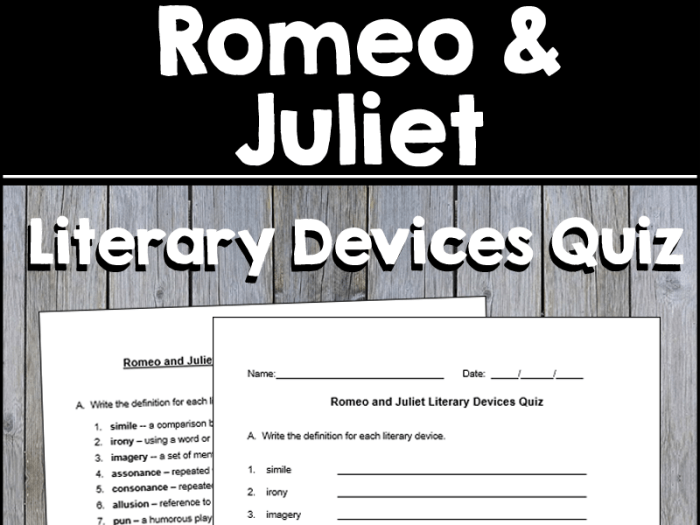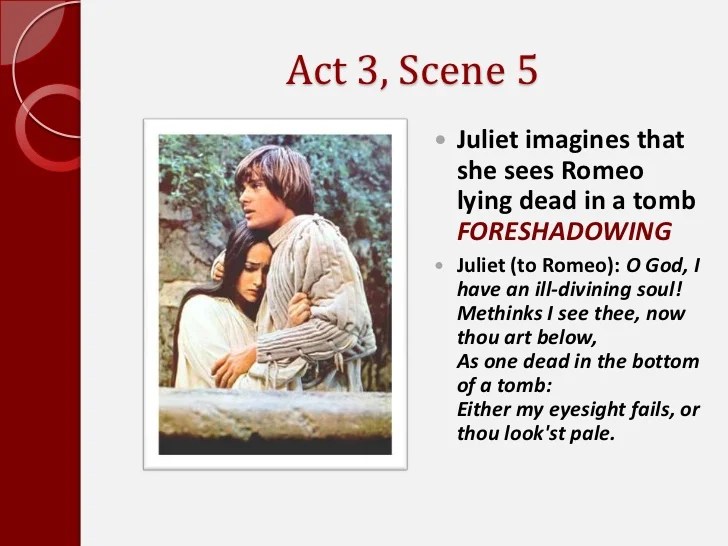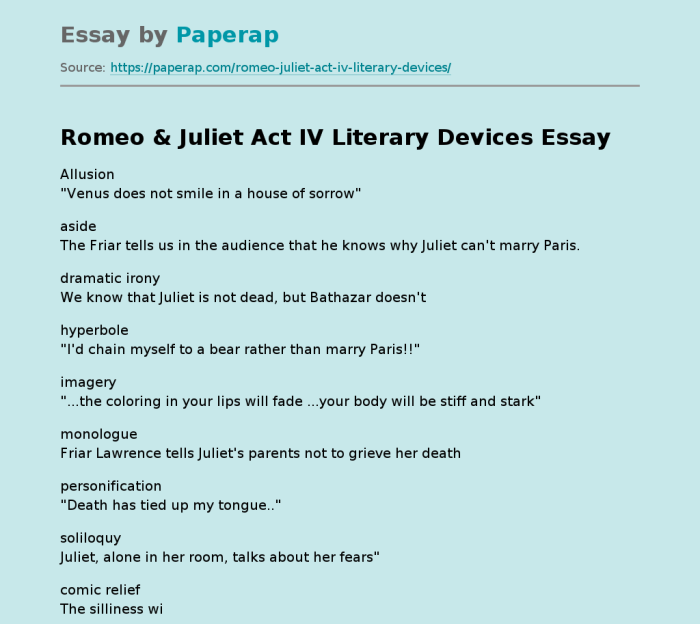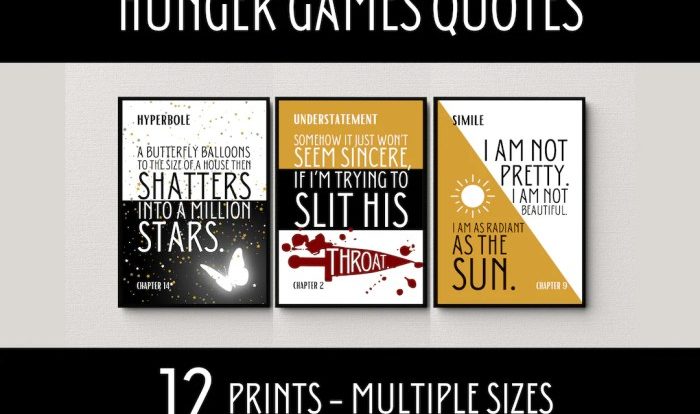Literary devices in romeo and juliet act 2 – In the enchanting realm of William Shakespeare’s Romeo and Juliet, Act 2 emerges as a literary tapestry adorned with a kaleidoscope of literary devices. From metaphors that paint vivid imagery to foreshadowing that weaves an intricate web of suspense, these devices elevate the play’s themes and characters to breathtaking heights.
Through an exploration of metaphors, similes, foreshadowing, imagery, irony, hyperbole, and personification, this analysis unravels the profound impact of these literary tools in shaping the narrative and enhancing our understanding of the play’s complexities.
Metaphors and Similes

Metaphors and similes are literary devices that create vivid imagery and enhance understanding by comparing two unlike things. In Act 2 of Romeo and Juliet, Shakespeare employs these devices to deepen the play’s themes and characterization.
One prominent metaphor is the “star-crossed lovers” analogy. It depicts Romeo and Juliet as victims of fate, destined to a tragic end due to external forces beyond their control. This metaphor reinforces the play’s central theme of love versus fate.
Similes are also prevalent in Act 2. For instance, Romeo compares Juliet to the “sun” in the famous balcony scene. This simile conveys Romeo’s intense passion and admiration for Juliet, likening her to a source of light and warmth.
Foreshadowing
Foreshadowing is a literary technique that hints at future events, creating suspense and building anticipation. In Act 2 of Romeo and Juliet, Shakespeare uses foreshadowing to hint at the tragic fate that awaits the lovers.
One instance occurs when the Friar warns Romeo about the potential consequences of his love for Juliet: “These violent delights have violent ends.” This foreshadows the tragic outcome of their romance.
Another example is when Romeo encounters Tybalt at the Capulet’s feast. Tybalt’s aggressive behavior foreshadows the eventual duel that will result in Romeo’s banishment and Tybalt’s death.
Imagery
Shakespeare’s use of imagery in Act 2 of Romeo and Juliet creates a vivid and evocative atmosphere. The play is filled with sensory details that appeal to the reader’s senses.
One example is the description of Juliet’s beauty as “the brightness of her cheek would shame those stars.” This imagery conveys the radiant glow of Juliet’s face, making her appear almost ethereal.
Another instance is the depiction of the night sky as “a canopy of stars” during the balcony scene. This imagery creates a sense of intimacy and romance, enhancing the atmosphere of the lovers’ meeting.
Irony
Irony is a literary device that creates a contrast between what is expected and what actually occurs. In Act 2 of Romeo and Juliet, Shakespeare employs various forms of irony to add depth and complexity to the story.
One example is situational irony. Romeo and Juliet fall in love at a Capulet feast, where they are supposed to be enemies. This irony highlights the absurdity and futility of their feud.
Another form of irony is dramatic irony. The audience is aware of the lovers’ impending doom, while the characters remain oblivious. This creates a sense of suspense and anticipation.
Hyperbole

Hyperbole is a literary device that involves exaggeration for emphasis or comedic effect. In Act 2 of Romeo and Juliet, Shakespeare uses hyperbole to convey the intensity of emotions and the characters’ perspectives.
One example occurs when Romeo exclaims, “Did my heart love till now? For I ne’er saw true beauty till this night.” This hyperbole emphasizes Romeo’s overwhelming passion for Juliet, as if he had never experienced love before.
Another instance is when Juliet says, “My bounty is as boundless as the sea.” This hyperbole conveys the vastness of Juliet’s love for Romeo, suggesting that it is limitless.
Personification

Personification is a literary device that gives human qualities to non-human entities. In Act 2 of Romeo and Juliet, Shakespeare uses personification to bring inanimate objects and abstract concepts to life.
One example occurs when Romeo addresses the night as “gentle nurse.” This personification suggests that the night is a comforting and protective presence for Romeo.
Another instance is when Juliet refers to her heart as “a traitor.” This personification conveys the conflict within Juliet’s heart as she struggles with her feelings for Romeo.
FAQ Compilation: Literary Devices In Romeo And Juliet Act 2
What is the significance of the “star-crossed lovers” metaphor in Romeo and Juliet Act 2?
The “star-crossed lovers” metaphor foreshadows the tragic destiny of Romeo and Juliet. It suggests that their love is doomed from the start due to external forces beyond their control, such as societal norms and family feuds.
How does foreshadowing create suspense and anticipation in Act 2?
Foreshadowing hints at future events, building tension and anticipation in the audience. For instance, Friar Laurence’s warning about the consequences of Romeo and Juliet’s hasty marriage creates a sense of foreboding.
What is the role of hyperbole in conveying emotions and perspectives in Act 2?
Hyperbole exaggerates emotions and ideas for dramatic effect. For example, Romeo’s declaration that Juliet is “more fair than the snow upon the raven’s back” expresses his overwhelming love and admiration for her.

